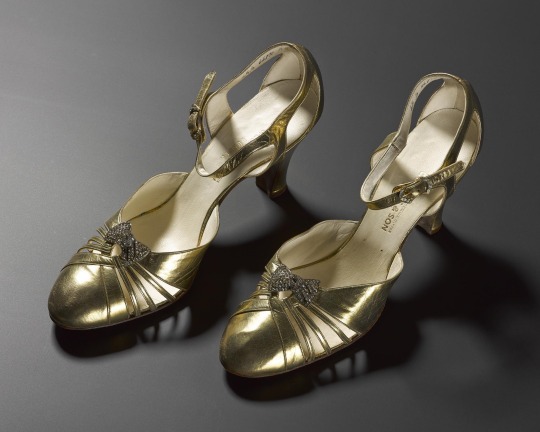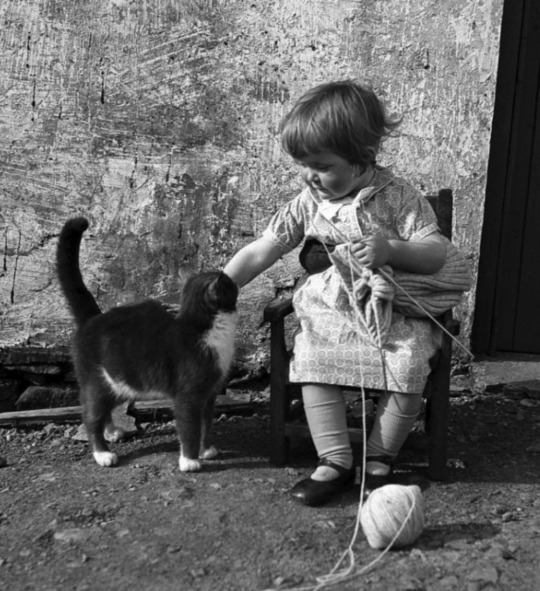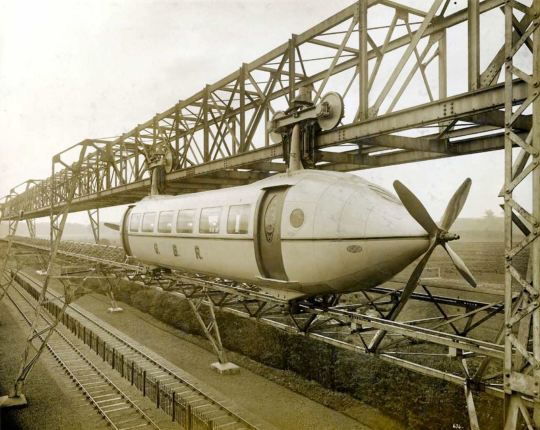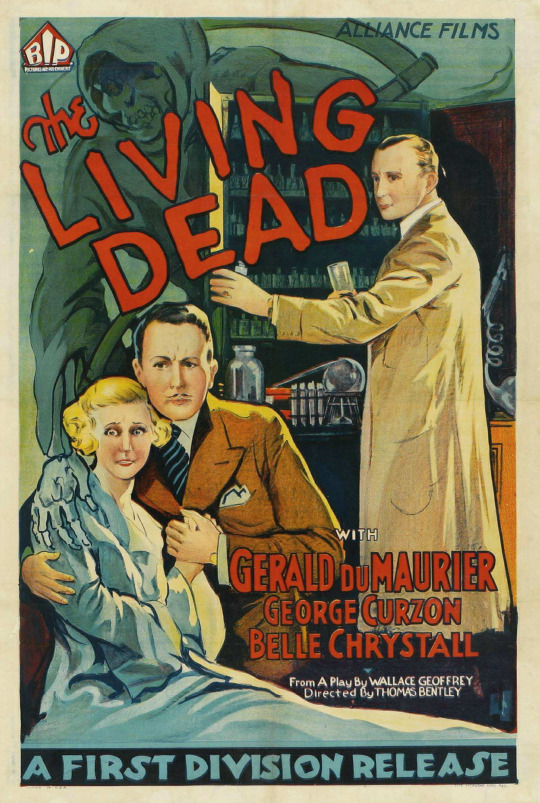#1930s Scotland
Text

Gold Leather Shoes, ca. 1935-1940, Scottish.
From Chalmers & Son.
National Museums Scotland.
#gold#leather#shoes#1935#1930s shoes#1930s Scotland#1930s britain#Britain#British#Scotland#scottish#1930s#national museums scotland#charmer & son#1936#1937#1938#1939#1940#1930s extant garment
31 notes
·
View notes
Text

A wee Scottish knitter and friend. 1939. Source.
1K notes
·
View notes
Text

Arrivals and departures. Princes Street station, Edinburgh, c.1934
146 notes
·
View notes
Text

Black & white glass plate negative of Lachlan MacAskill with a peat spade and his pet dog and kitten, above Laig Bay, Isle of Eigg with An Sgurr in the distance.
Photographed between 1910 and 1930, part of the MEM Donaldson Collection at the National Museum of Scotland.
- Source: Stories of Scotland Podcast
#Lachlan MacAskill#peat#Laig Bay#Isle of Eigg#An Sgurr#Scotland#storycatching#vintage photography#1910-1930#MEM Donaldson Collection#National Museum of Scotland#Stories of Scotland Podcast
194 notes
·
View notes
Text

Helen Hayes and Philip Merivale, still in costume (maybe between a matinee and an evening performance?), playing ping-pong backstage during the run of Mary of Scotland by Maxwell Anderson, 1934. Hayes played Mary, Queen of Scots and Merivale played Bothwell.
Photo: Vandamm via NYPL
#vintage New York#1930s#Vandamm#backstage#Helen Hayes#Philip Merivale#Mary of Scotland#ping-pong#actors backstage#vintage Broadway#theater#theater 1930s
46 notes
·
View notes
Text

The Living Dead (The Scotland Yard Mystery, 1934) R-1936 - Trade ad
#the scotland yard mystery#the living dead#gerard du maurier#grete natzler#george curzon#1934#1930s movies#thomas bentley#crime#mystery#trade
27 notes
·
View notes
Text

Salvaged German battleship SMS Prinzregent Luitpold arrives at Rosyth, Scotland, for scrapping, 12 May 1933
Source
6 notes
·
View notes
Photo



The George Bennie Railplane System of Transport - Prototype construit en Ecosse - 1929-1930
Le système ne fut jamais développé et George Bennie finit par faire faillite.
Dernière photo : 1er transport de passagers à Glasgow le 4 juillet 1930. L’inventeur du système, George Bennie, est le troisième personnage dans la file d’attente.
#Et pendant ce temps-là#Chemin de fer#Rail transport#Monorail#George Bennie Railplane#george bennie#Prototype#glasgow#Ecosse#Scotland#1929#04/07/1930#07/1930#1930
59 notes
·
View notes
Text
US diplomat: "Okay, so you bought some of Alaska's land from Russia, okay, okay. But...your people live on the other side of the world, and, let's be real here, we're too racist to respect you as equals. Why should we honour your deal with the Russian Empire when we can just...waltz in and annex your little home away from home?"
Tsalal Alaskan colonist leader: "Good question! Do you see this missile, this one right here, bigger than a train? Its warhead is filled with several tons of fuel-air explosives. Now, I'm not saying that we have a dozen of these things stocked on ships ready to fire at any given moment and a bunch of fanatical suicide pilots ready to fly them ludicrous distances into your nearest population centers...
"But I'm not not saying that."
#and so the alaskan enclave hangs around until maybe. 1930 ish.#writing#the entire north sphere has collapsed by 1940 due to extreme logistics issues hostile neighbours and a closing of the tech gap#at its height it encompasses a piece of alaska (peaceful)#western Ireland (hahaha not peaceful)#iceland greenland a scrap of siberia parts of west africa and some islands#but it only spans all those areas for a couple of years and in the end most of them get ethnically cleansed#still its fun to give the western world a taste of that conquistador medicine for a little while#along with some lingering cultural trauma#alaska is the beginning of the end and also results in the russian tsars coming off life support and the birth of an alt-soviet style state#they don't get scotland in this au and they certainly don't have northern holdings by the 21st century
1 note
·
View note
Text


Looking toward Forth Bridge, Scotland of USS Utah (BB-31), USS Florida (BB-30) and USS Wyoming (BB-32) during Midshipman's Cruise on September 30, 1930.
OAC: 1996.0009.KU93982.SS, 1996.0009.KU93978.SS
#USS Utah (BB-31)#USS Florida (BB-30)#USS Utah#USS Florida#Florida Class#USS Wyoming (BB-32)#USS Wyoming#Wyoming Class#dreadnought#battleship#warship#ship#boat#Scotland#September#1930#interwar period#united states navy#us navy#navy#usn#u.s. navy#my post
16 notes
·
View notes
Text
it would be cool if trains were like time machines, and you could pick an era to travel back to, and instead of watching the landscape changing out of the window, you could watch it moving from eras and gradually going further and further back and getting more and more old-fashioned as you travelled further
#i'm still travelling home still very bored#but ohhh if only i could go. okay i want to go to scotland but in the victorian era#and then i'd be travelling past lincolnshire in the 1980s and yorkshire in the 1960s and newcastle in the 1930s or 20s etc etc. watching it#all from the window. it just think it would be cool
6 notes
·
View notes
Text

Black Silk Evening Jacket, 1837, French.
Designed by Elsa Schiaparelli.
National Museums Scotland.
#black#womenswear#extant garments#silk#jacket#20th century#1937#1930s#elsa schiaparelli#national museums scotland#french#France#1930s France#1930s evening#1930s jacket#third republic
20 notes
·
View notes
Text

A wee knitter and friend. Ca. 1939. Shetland Museum and Archives, Scotland.
5K notes
·
View notes
Text

‘His lady has taen another mate’ by Robert Burns, ca. 1939. National Galleries of Scotland.
0 notes
Text
Early on the morning of 29 August 1930, the last 36 residents began the evacuation from St Kilda, a group of islands 110 miles off the west coast of Scotland that had been lived on for thousands of years.
Three hours later, 13 men, 10 women and 13 children were aboard the ship that would take them away from their homes forever.
They left because they were concerned they would not last another winter on the barren North Atlantic archipelago, which was virtually cut off from the mainland for nine months of the year by rough seas and winds.
The islanders’ precarious existence was already well known to the Secretary of State and his departmental officials, as well as to local government officials. His response to the petition was to organise the evacuation of all the islanders and most of their 1,500 sheep. On 29 August 1930 they were evacuated on HMS ‘Harebell’. Officials found forestry work for the men, and most of them were settled at Lochaline near Oban, while other families went to live at Strome Ferry, Ross-shire, Culcabock near Inverness, and at Culross, Fife.
At the time of the evacuation, St Kilda was owned by Sir Reginald MacLeod of MacLeod. The Earl of Dumfries bought the island as a bird sanctuary in 1931. He became the Marquess of Bute and at his death in 1956 bequeathed it to the National Trust for Scotland. In 1986 St Kilda became Scotland’s first World Heritage Site. Years after the evacuation, St Kilda was used for radar installations, and its archaeology has been extensively investigated and recorded. These contrasting activities are also documented in NRS records.
0 notes
Text

The Scotland Yard Mystery (1934)
AKA The Living Dead, The Case of the Missing Coffins
#the scotland yard mystery#the living dead#gerald du maurier#george curzon#belle chrystall#grete natzler#1930s movies#thomas bentley#crime#mystery#movie posters
41 notes
·
View notes